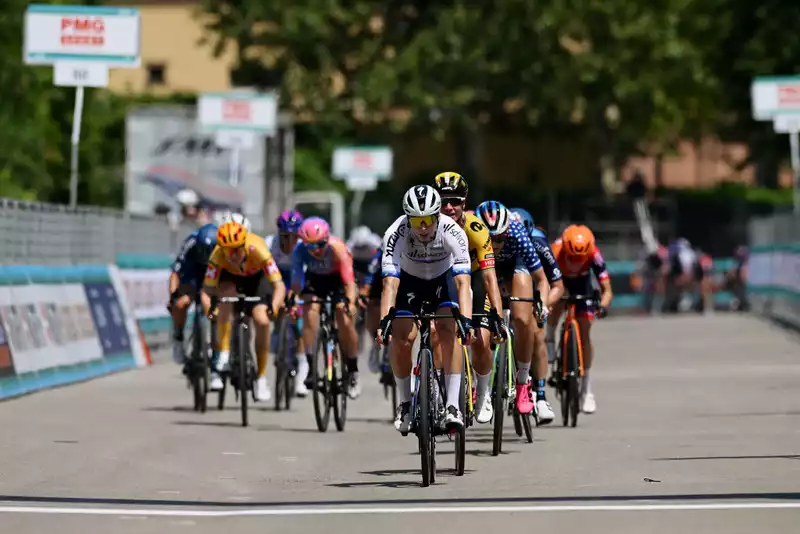Stage 3 of the Giro d'Italia was sure to be a sprint affair, as the only difficult climb was in the third category, over 70 km from the finish. However, the final stage was very technical and could have been a dangerous stage if the peloton had ridden the full distance.
With 2.1 km to go, the peloton took a 90-degree right turn and crossed the city of Modena on a cobblestone road, which was a long straight. More problematic was after Flamme Rouge: a sharp 120-degree curve narrowed to one lane, then a left turn into a cobblestone forecourt narrowed the roadway again to about 3 meters at the entrance to Piazza d'Almi Novi Sado.
After the narrow entrance, the remaining 700 meters is a wide asphalt track that curves left around three-quarters of the park.
Amidst growing concerns for rider safety following the death of Gino Mader (Bahrain Victorious), the UCI and other cycling officials had just launched the SafeR campaign two days earlier, and no one wanted to put the Giro Donne peloton in unnecessary danger.
The night before the stage, an agreement was reached between the race organizers and the riders' union, the CPA Women, to neutralize the finish and measure overall times at the 1km mark. This meant that there would no longer be an intermediate sprint or time added at the finish, but stage wins would still be contested.
The race was very exciting up to Flamme Rouge, where a high-speed, technical route split the peloton into several groups.
Without neutralization, riders took risks to avoid losing time here, potentially causing crashes and injuries.
In fact, the only crash in the final occurred 50 meters from the line. Letizia Paternoster (Team Jayco Alura) and Maria Martins (Phoenix Deceuninck) collided without realizing each other, causing Paternoster to crash in a somersault.
Fortunately, Paternoster was not seriously injured. Paternoster fortunately did not suffer any serious injuries.


Comments